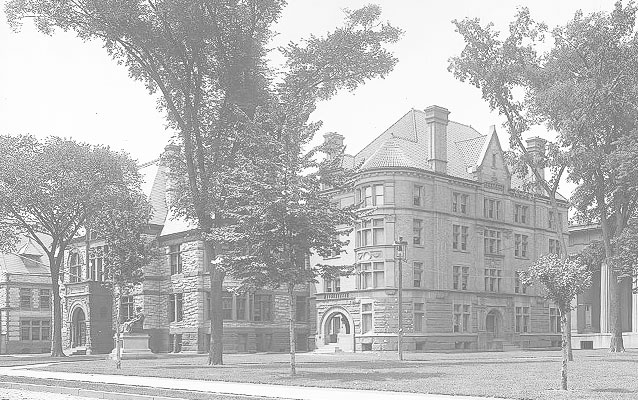Last updated: November 20, 2020
Place
Emma Willard School

Detroit Publishing Company courtesy of the Library of Congress
The Emma Willard School, built between 1910-1927 and designed in a Jacobethan Revival style common to educational facilities of the era, is recognized as the country's first secondary school for females and was the product of Emma Willard's pioneering efforts to expand educational opportunities for women. Born Emma Hart in 1787 in Berlin, Connecticut, she married John Willard in 1808. An innovative teacher since age 17, Willard opened the Middlebury Female Seminary in 1814 in response to the local college's refusal to admit women. Brimming with confidence over the success of her seminary, the graduates, and her own teaching techniques, Willard moved to Troy, New York and opened the Troy Female Seminary in hopes of attracting public funding opportunities. Though she failed to secure such funding, Willard's industriousness created a network of philanthropy which supported the Seminary and enabled the graduation of over 200 women teachers. Willard's success demonstrated the importance of educational opportunities for women and the need for seminaries to introduce "more substantial subject matter" to overcome critics. Her publications on behalf of women's education earned the support of such luminaries as James Monroe and Thomas Jefferson. Among the illustrious graduates of the Seminary was Margaret Slocum Sage, wife of Russell Sage and America's foremost woman philanthropist. Sage donated the Seminary's current campus and financed the construction of several school buildings. Although a dedicated educational reformer, Willard was emblematic of her class and age by focusing on middle and upper-class girls whose upbringing was conducive to the values and morals Willard coupled with formal education. In 1895 the Seminary was renamed the Emma Willard School as a posthumous honor to its founder.
